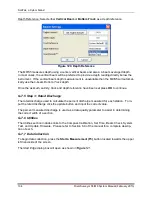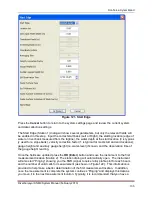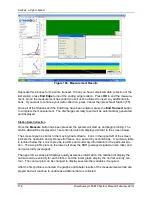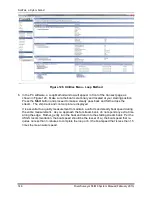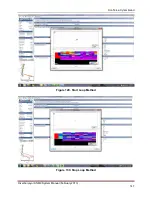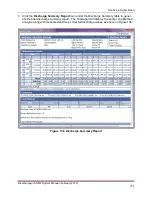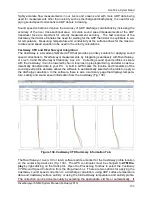
SonTek, a Xylem brand
144
RiverSurveyor S5/M9 System Manual (February 2013)
Appendix H. Loop Method
Introduction:
The “Loop Method” is used for correcting discharges biased by a moving bed. The
RiverSur-
veyor Live
moving-boat software uses calculations and procedures documented in the USGS
Scientific Investigations Report 2006-5079 by David S. Mueller and Chad R. Wagner, prepared
with the cooperation of Environment Canada (
http://pubs.usgs.gov/sir/2006/5079/
). This USGS
report describes in detail the procedures and techniques for collecting Loop Method field data
and the proper calculations used to correct discharge for a moving-bed bias. The report also
addresses the sources and magnitude of measurement uncertainty when performing this type of
calculation. Based on field measurements from 13 locations the report concludes that when
properly applied the Loop Method represents a valid alternative to the use of DGPS when
measuring discharge in stream with moving-bed conditions. SonTek highly recommends that
you review this document before applying the Loop Method to your data sets.
It should be noted:
All computer code and output analysis used for this loop-method calcula-
tion was provided to SonTek/YSI, Inc. by the USGS Office of Surface Water (OSW). As such,
moving-bed results provided using the existing MATLAB program (v4.03 or later) developed by
David S. Mueller with the USGS OSW will produce identical results when computed using the
RiverSurveyor Live
software. The actual moving bed velocity calculation is based on the “dis-
tributed correction” method which is described in detail in the report mentioned above.
Background
For moving-boat discharge measurements, the RiverSurveyor M9/S5 measures boat speed us-
ing either bottom-tracking or an integrated DGPS system. Bottom-tracking requires that the riv-
erbed be stationary (motionless) in order to properly compute boat-speed. During certain flow
conditions, sediment will be transported along the riverbed (i.e. a moving-bed) and will produce
a bias in the bottom-tracking results which will ultimately result in a biased discharge measure-
ment. DGPS is a good alternative to bottom-tracking because it is not affected by the moving-
bed.
In some instances DGPS will not be available or reliable at your measurement site. As an alter-
native, when used properly the Loop Method can be used to correct the bottom-tracking bias
produced by the moving bed.
The Loop Method is used to correct discharges that are biased by sediment transport (moving-
bed) when bottom-tracking is used as a reference to measure boat speed. The basic premise is
based on a “back and forth crossing closure error” where the apparent upstream movement of
the ship-track is used along with the measurement time to determine the mean velocity of a
moving bed. In this case, the discharge will be biased LOW by a certain percentage based on
the velocity magnitude of the moving-bed.
Loop Method Procedure
The Loop Method procedure described here follows explicitly the step-by-step procedure docu-
mented in the appendix section of the USGS Scientific Investigations Report 2006-5079 by
Содержание SonTek River Surveyor M9
Страница 10: ......
Страница 118: ......
Страница 150: ...SonTek a Xylem brand 140 RiverSurveyor S5 M9 System Manual February 2013 Figure 126 Island Edge...





